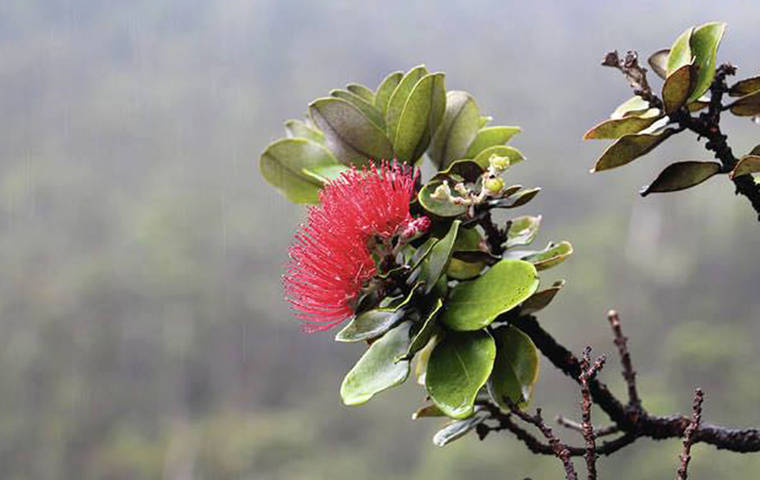State reminds Merrie Monarch Festival-goers of ohia quarantine

COURTESY PHOTO
As the 56th Merrie Monarch Festival in Hilo gets underway this week, state officials are once again reminding travelers the transport of ohia from Hawaii island is prohibited to prevent the spread of rapid ohia death, a fungal blight devastating native forests.
As the 56th Merrie Monarch Festival in Hilo gets underway this week, state officials are once again reminding travelers the transport of ohia from Hawaii island is prohibited to prevent the spread of rapid ohia Opens in a new tabdeath Opens in a new tab, a fungal blight devastating native forests.
Under an emergency quarantine Opens in a new tab issued in August 2015, the movement of all ohia plants and plant parts are restricted, including flowers, leaves, seeds, stems, twigs, cuttings, untreated wood, logs, mulch, green waste, frass (sawdust from boring insects) and any soil from Hawaii island, unless one has a permit issued by the Hawaii Department of Agriculture.
State officials will set up special inspection stations at airports in Hilo and Kona, where passengers may turn in any ohia material before boarding flights. Additional inspectors will be posted at the airports near the end of the festival, which runs through Saturday. The plant quarantine offices in Hilo and Kona will also accept ohia material for proper handling.
“With the spread of rapid ohia death on Hawaii island, it is even more critical that ohia not be taken off the island,” said Phyllis Shimabukuro-Geiser, chairperson of the Hawaii Board of Agriculture, in a news release.
Violations of the quarantine rule can result in fines from $100 to $10,000 for the first offense, and from $500 to $25,000 for a second offense within five years of a prior conviction.
State officials said multi-agency rapid ohia death working groups have been meeting with Native Hawaiian groups, the Merrie Monarch organization and other community groups to provide guidance on handling ohia material.
Don't miss out on what's happening!
Stay in touch with breaking news, as it happens, conveniently in your email inbox. It's FREE!
They reminded the public that the very act of harvesting ohia may spread the disease since spores may be carried in soil and by harvesting tools, vehicles, shoes and clothing to uninfected areas.
Rapid ohia death was first found in Puna in 2010. It had only been detected on Hawaii island until 2018, when it was found on Kauai. Initially, researchers identified the fungus as Ceratocystis fimbriata. Recent research has reclassified Ceratocystis fimbriata into two distinct species new to science — Ceratocystis lukuohia and Ceratocystis huliohia.
Based on aerial surveys in 2018, officials estimate ROD has infected about 135,000 acres around Hawaii island.
Travelers seeking more inspection information may contact HDOA’s Plant Quarantine offices at 971-9393 in Hilo, 837-8413 in Honolulu, 241-7135 on Kauai, 326-1077 on Kona and 872-3848 on Maui.
More information on how to report suspected Rapid Ohia Death is available at the Department of Agriculture website Opens in a new tab.



